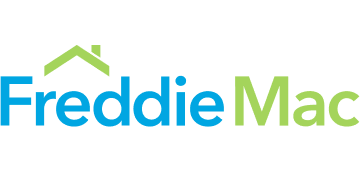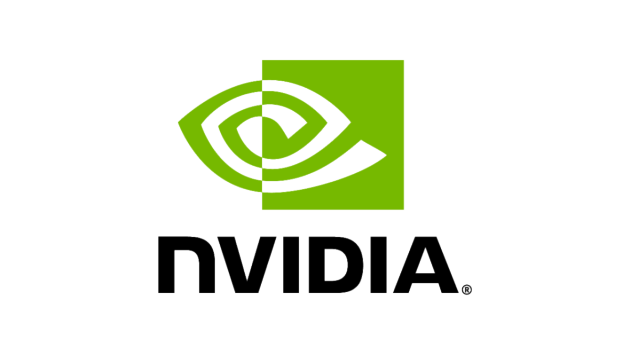
Retail Demand Forecasting with AI
Anticipate Seasonal Trends and Consumer Behavior with Time Series Forecasting
According to NielsenIQ, 65% of shoppers believe that grocery inventory availability is worse than it was pre-pandemic.1 There’s a variety of factors that contribute to this perception. But, fortunately for retailers, there are tools that can help them mitigate potential problems with inventory. Artificial intelligence (AI) and time series forecasting can help retailers employ demand forecasting more effectively—saving time and money, increasing efficiency, and improving customer experience.
The Biggest Demand Forecasting Challenges
Poor demand forecasting and inconsistent inventory may lead to lost potential sales and upset customers. Grocery retailers, for example, can count on items such as cereal and bread to consistently sell at high volumes every day. But what about goods such as eggnog or turkeys that experience seasonal spikes?
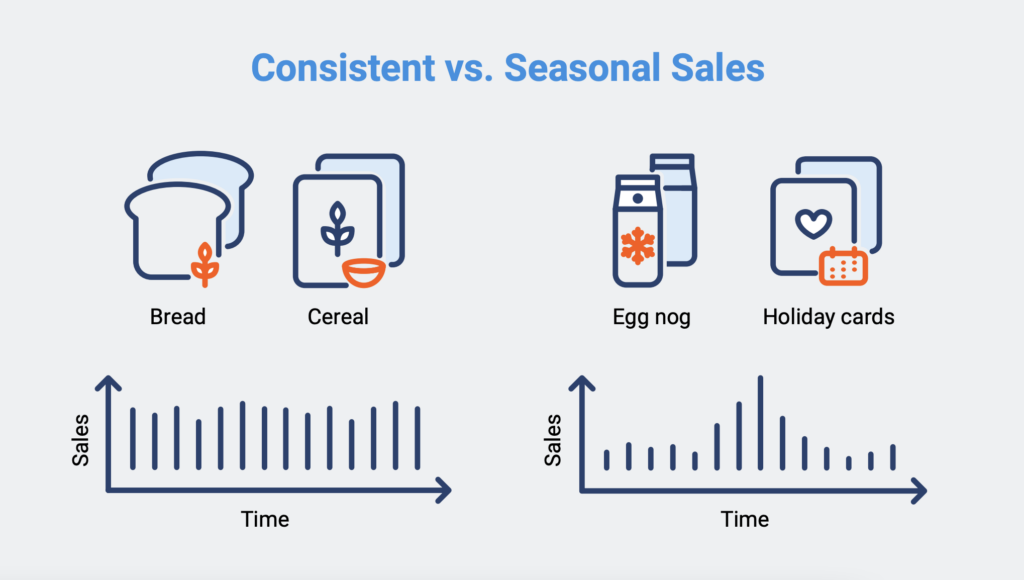
These forecasting problems2—a DELMIA survey reports—are quite real:
- 23% of surveyed retailers said forecasting was the biggest challenge in their logistics
- Only 34% of retailers have full visibility of inventory in warehouses and transit
In addition, stores located in different regions might have to handle different buying behaviors around price consciousness, demand for organic food, or prepared versus raw food—not to mention that data capture is not advanced at many grocery stores, making it difficult to accurately measure inventory.
Demand Forecasting Problems Are Compounded by Seasonality and Consumption Trends
In just four months in 2021, the seemingly stable ready-to-eat breakfast cereal industry missed a total of $201M in sales because customers couldn’t locate their favorite varieties in stores, the NielsenIQ report further states. But predicting holiday shopping and other seasonal trends is more intricate than cereal and puts additional pressure on retailers to deliver the right goods to consumers—how and when they want them.
Adobe forecasted3 the holiday season in 2022 to drive $209.7 Billion in U.S. online sales—with an $11 billion Cyber Monday—and reports the complexity of post-pandemic holiday retail trends:
- What are Consumers Buying Online—Online apparel sales are expected to decline 6.7% YoY to $40.7 billion as pandemic-related anxieties decrease.
- Online grocery sales are predicted to increase to $13.3 billion and 10.5% YoY as consumers prepare for holiday parties.
- When are They Shopping—Cyber Monday is projected to drive a record $11.2 billion in spending, increasing 5.1% YoY—while Black Friday online sales are projected to grow by just $9 billion with a 1% YoY push.
- This reflects the trend of major shopping days losing prominence as e-commerce becomes a more common daily activity.
- How are They Picking Up—Curbside pickup was used for 25% of all online orders in December 2021 and has now ingrained itself with shoppers—with a curbside pickup peak predicted from December 22 to December 23.
Meeting these additional seasonal challenges is driving even more inventory and demand forecasting uncertainty and preventing retailers from empowering consumers with tailored deals. With increasing access to information and retail options—combined with a fading concept of brand loyalty4—what can retailers do to predict consumer demand better?
Time Series Drives Better Forecasting
Solving inventory management challenges is not the only way AI can help retailers improve their ability to predict consumer demand for goods, enabling broader improvements for supply chain management. Predicting future performance from past behavior for time-dependent data is a major advantage and the aim of time series forecasting.
Time series is a set of data points indexed, listed, or graphed in time order that uses models to predict future values based on previously observed values—and could be the answer to forecasting sales over a holiday season or making sure inventory meets demand without overstocking.
Traditional time series modeling is a complex and labor-intensive effort due to the number of historical events that impact the current predictions—making it difficult to find the most influential signals in the data. These models also need to be re-built as conditions change and also have the following drawbacks:
- They are resistant to automation
- They are limited to the quantity of interest and the date and unable to include impactful features, such as location, marketing activities, customer demographics, and more
- They are difficult to implement and time-consuming, because finding the right methodology to address a problem can be challenging
The issue is further exacerbated as retailers want hundreds or thousands of individual predictive models tailored and delivered at scale. The DataRobot AI platform has advanced features that help retailers tackle these time series challenges:
- Creating competition among different algorithms and quickly identifying the best algorithm to get the forecasts required to drive just-in-time operations
- Building multiseries models that encompass all the different series, such as stores, products, etc.
- Outputting separate predictions for each series
These advanced features—combined with proven use cases developed for the world’s top retailers—can help organizations more accurately forecast demand. Let’s take a deeper look at some key components of demand forecasting in action.
Next-Level Demand Forecasting with DataRobot
Without AI, time series modeling can be complex and laborious. DataRobot automates and simplifies the process:
- Forecasting—Set the forecast point, or the moment in time when you want to make a prediction. The further back you go to derive features, the less data you’ll have to train your model. If the data is changing a lot, select a shorter window of time to derive new features. To prevent target leakage and include valuable features in the model, DataRobot allows you to specify features that are known ahead of time (“known in advance” features).
- Anomaly Detection—Detect anomalous events—such as unusually high network activity on a store sensor or faulty sensors in a machine—without specifying a target variable.
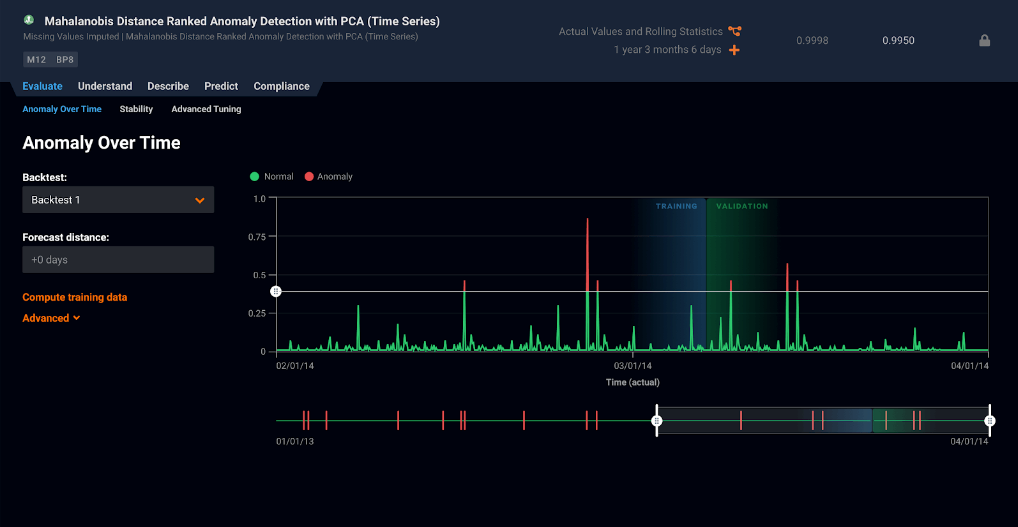
- Time Series Automation—Make predictions about future events based on historical patterns and trends by automating the creation of highly sophisticated time series models with DataRobot. Get next-level forecasting for thousands of series with potentially millions of items in each series—all at unprecedented scale.
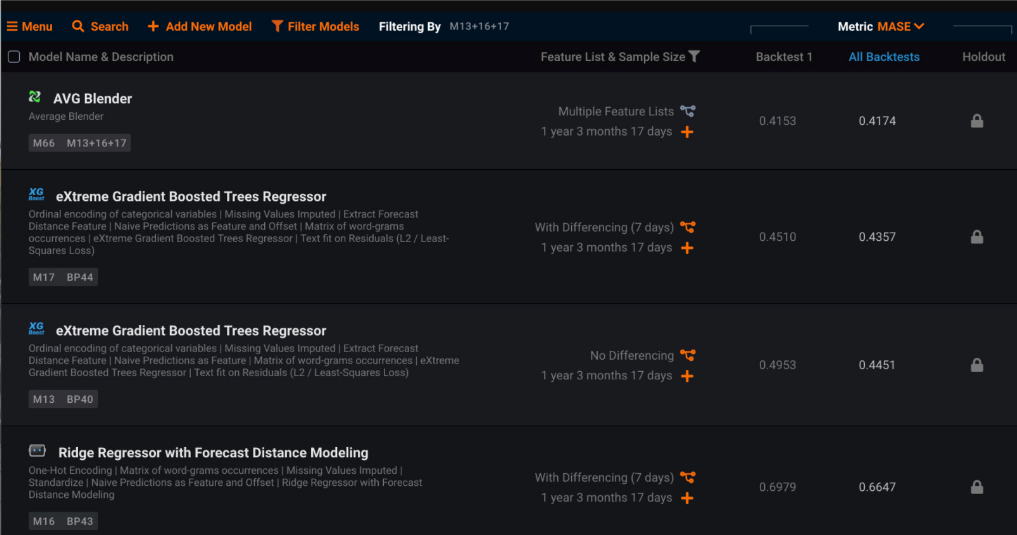
- High Accuracy from Model Diversity—Beyond essential and proven time series methods, such as ARIMA and Facebook Prophet, DataRobot includes advanced time series models that help you achieve even higher forecasting accuracy.
- Value—Because the goal of a time series model is to both extract understanding and predict future outcomes, DataRobot offers many ways to visualize insights over time and to deploy models to production, including full API support to integrate modeling into business processes and applications.
As retailers want to both extract understanding and predict future outcomes, DataRobot also offers multiple ways to visualize insights over time and to deploy models to production, including full API support to integrate modeling into business processes and applications.
Make Predictions Ready to Withstand the Real World
Retailers are equipped with the right data resources to improve their ability to predict future demand—they just need to apply the right technology to this data and evolve from Excel-based methods to more advanced planning solutions.
DataRobot Automated Time Series integrates best practices in time series modeling, including automating time series feature engineering to discover predictive signals. As the goal of a time series model is to extract understanding as well as predict future outcomes, DataRobot also automatically detects stationarity, seasonality, transforms the target, and implements backtesting. This helps you achieve the highest possible accuracy—to make sure you always can find fresh milk and your favorite cereal.
Learn More About DataRobot
1 NielsenIQ, “Fresh Insights About Grocery On-Shelf Availability in the Post-COVID Era.”
2 Dassault Systèmes DELMIA, “Retail Supply Chain & Logistics Planning Report 2021.”
3 Adobe, “ Adobe Forecasts $209.7 Billion Holiday Season Online (U.S.); Cyber Monday to Top $11 Billion.”
4 InsiderIntelligence, “How brand loyalty is disappearing and what to do about it.”



